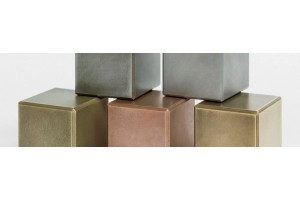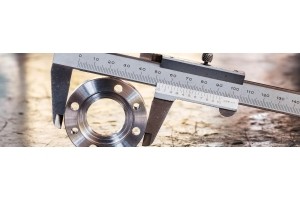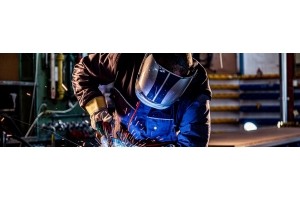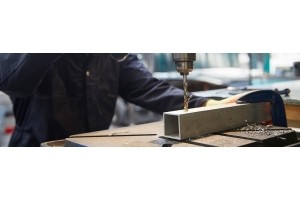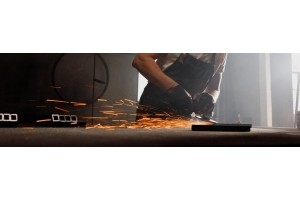- Material
-
- Aluminium 61
- Brass 8
- Stainless Steel 8
- Galvanised Steel 1
- Mild Steel 1
Setting Up Your Metalworking Shop
Are you planning to transform your garage or spare room into a functional metalworking space? Many aspiring metalworkers struggle with knowing where to start when setting up a metal workshop. The difference between a cramped, dangerous workspace and a well-organised metalworking shop often determines whether your projects succeed or become frustrating endeavours.
This comprehensive guide covers the essential elements of metalworking shop setup, from choosing the right location to selecting proper equipment, implementing safety measures, and working with a variety of materials. We’ll help you create a workspace that's both efficient and safe, backed by our 70+ years of experience in the metals industry.
Planning Your Metalworking Workspace
Before you purchase a single tool, careful planning forms the foundation of any successful metalworking shop setup. The space you choose will impact everything from your project quality to your safety, making this initial decision crucial for long-term success.
Choosing the Right Location
Your workshop location needs three critical elements: proper ventilation, adequate lighting, and sufficient power access. Ventilation removes harmful fumes and dust particles that metalworking produces, whilst good lighting prevents eye strain and reduces accident risk.
Power requirements vary depending on your equipment, but most workshops need at least 240V supply for heavy machinery. Consider natural light sources and ensure you can install extraction fans or open windows for airflow.
Safety Considerations Before You Begin
Workshop safety tips start with your foundation planning. Fire safety requires clear escape routes and proper storage for flammable materials. Space requirements depend on your largest projects, but allow extra room for safe movement around equipment. Flooring should be non-slip and easy to clean, with concrete being the most practical choice for heavy metalworking operations.
Essential Tools and Equipment
Setting up a metal workshop requires careful selection of metalworking tools and equipment that match your intended projects. Start with core essentials rather than trying to equip everything at once.
Core Metalworking Tools
Your basic toolkit should include cutting tools, grinding equipment, welding apparatus, drilling tools, and precise measuring instruments. Quality matters more than quantity when starting out.
Essential tools for any metalworking shop:
- Angle grinder with cutting and grinding discs
- Metal cutting saw or bandsaw
- Welding equipment (MIG, TIG, or arc welder)
- Drill press or high-quality hand drill
- Measuring tools (steel rule, square, callipers)
- Files and sandpaper in various grits
Storage and Workbenches
Organised tool storage prevents damage and saves time. Wall-mounted systems and drawer units work well for different tool types. Steel-framed benches with thick tops provide the best stability.
Safety Gear You Shouldn't Skip
Never compromise on protective equipment. Safety glasses, leather gloves, ear protection, and dust masks protect against metalworking hazards.
Designing Your Workshop Layout
Effective metalworking shop setup requires thoughtful layout design that promotes smooth workflow whilst maintaining safety standards. Your workspace organisation directly affects both productivity and accident prevention, making layout planning a critical step.
Workflow Zones
Create separate areas for different operations to prevent contamination and improve efficiency. Position your cutting zone near the entrance for easy material handling, place welding areas away from flammable storage, and establish finishing zones with proper ventilation. This separation also helps contain mess and makes cleanup more manageable.
Positioning Heavy Equipment Safely
Heavy machinery placement requires consideration of power supply, ventilation needs, and operator safety. Ensure adequate clearance around equipment for safe operation and maintenance access. Position the heaviest items on the strongest floor areas and consider vibration isolation for equipment that might disturb neighbours.
Keeping the Workspace Clutter-Free
A cluttered workshop creates safety hazards and reduces efficiency. Establish designated storage for materials, works in progress, and finished projects. Regular cleaning schedules prevent metal shavings and dust accumulation that can create slip hazards or fire risks.
Working with Aluminium 5 Bar Treadplate
Aluminium 5 bar treadplate has become increasingly popular in workshop applications due to its practical benefits and versatility. Understanding how to work with this material effectively can enhance your workshop's functionality whilst providing durable, professional results.
Why Aluminium Treadplate is Ideal for Workshops
Aluminium 5 bar treadplate offers exceptional non-slip properties, making it perfect for workshop flooring, ramps, and walkways. Its corrosion-resistant properties ensure longevity in environments where moisture and chemicals are present. The lightweight nature of aluminium 5 bar treadplate makes installation easier compared to steel alternatives, whilst still providing excellent durability for heavy-duty applications.
Best Tools for Cutting and Handling Treadplate
Cutting aluminium 5 bar treadplate requires sharp carbide-tipped saw blades or plasma cutters for clean edges. Avoid using worn blades that can cause material to grab or produce rough cuts. Use proper clamping techniques to prevent vibration during cutting and consider the raised tread pattern when measuring and marking cut lines.
Storage and Protection Tips
Store treadplate flat to prevent warping, using wooden supports between sheets to allow air circulation. Protect the surface from scratches by using protective film or separating sheets with cardboard. Keep storage areas dry to maintain the material's corrosion-resistant properties.
Efficiency and Safety Best Practices
Maintaining your metalworking tools and equipment ensures both safety and longevity of your investment. Regular maintenance prevents unexpected breakdowns that could compromise project deadlines or create dangerous situations in your workshop.
Maintenance for Tools and Machines
Establish regular maintenance schedules for all equipment. Clean and lubricate moving parts according to manufacturer specifications, inspect cutting tools for wear and damage, and replace worn components before they fail. Keep maintenance logs to track service intervals and identify patterns that might indicate underlying problems.
Dust and Waste Management
Metal dust and debris create both health hazards and fire risks. Install adequate dust collection systems near grinding and cutting operations. Separate different metal types when collecting waste for potential recycling value. Store oily rags in metal containers with tight-fitting lids to prevent spontaneous combustion.
Building Good Housekeeping Habits
Workshop safety tips extend beyond equipment to daily practices. Clean workbenches after each session, return tools to designated storage immediately after use, and sweep floors regularly to prevent slip hazards. These habits become automatic with practice and significantly reduce accident risks whilst improving work quality.
Final Thoughts
Setting up your metalworking shop requires careful planning, proper equipment, and safety protocols. Well-organised workspaces deliver better project quality and enhanced safety.
Clickmetal's extensive product range provides everything you need for your workshop. Our free cutting service and 70+ years' experience support both professionals and hobbyists nationwide.
For expert advice on workshop materials, call 01794 526090 or use our contact form.

